News
Bank This

Worth billions of dollars, these banks help Indian immigrants weave dreams....
|
Namaste! Can I help you?” comes the cheerful, clearly Indian accented voice over the phone, and if need be, it can break into Hindi or Gujarati. No, your call to the local bank hasn’t been outsourced to India; it’s being answered right in the heart of Iselin, N.J., by an Indian American who looks and talks like you. It’s all part of a marketing strategy aimed at Indian Americans by one of the newest banks to target this growing affluent community. The Indus American Bank, started by Indian Americans, caters to people of South Asian origin who are the focus and reason for its existence. It is one of nearly a dozen Indian American banks in the U.S., which between them have billions of dollars in assets.
Indians have penetrated the upper echelons of American banks for some time – Vikram Pandit was recently appointed CEO of Citigroup and Ajay Banga is chairman and CEO of Global Consumer Group International at Citigroup, Inc. And Jay Sidhu, until recently chairman and CEO of Sovereign Bank in Reading, Penn., is credited with building it into the country’s 17th largest bank over his 20 year career with the company. Yet while there are hundreds of Chinese, Korean, African American and Hispanic banks, Indian owned community banks are the new kids on the block. The biggest Indian American bank is the Mutual Bank of Chicago, with $1.35 billion in assets, followed by National Republic Bank of Chicago, ($809 million) Haven Trust Bank of Atlanta ($435 million) and State Bank of Texas ($403 million), according to FDIC data from September 2007. Other banks include Leader Bank in Boston, American Pride Bank in Macon, Ga., All American Bank in Des Plaines, Ill., and Lotus bank in Nov. Mich. John Hall, of the American Bankers Association, says community banks target niche customers because they need to differentiate themselves from the largest banks. While large banks serve all customers, community banks tend to target a specific group, be it small business clients, high net worth individuals or people from an ethnic group like the Latino, Chinese or Korean community.
“With ethnic focused banks, there are many advantages to that group in that there is a built-in trust factor to conduct financial transactions with a bank that is owned by people who look like them,” he says. “At some point though, the bank has to make a decision. Does it want to grow outside its community? If it wants to, then it has to re-brand itself if it’s been so heavily tied to only one ethnic community.” The Indian American banks take different approaches to their target markets. When Mukesh ‘Mike’ Patel started Haven Trust Bank in 2001, it was to address the unmet needs of immigrant motel owners in the Atlanta area. A founding member of the Asian American Hotel Owners Association (AAHOA), Mike with his brother R.C. Patel heads the Diplomat Group of Hotels, a large hotel chain. “Basically through AAHOA I realized the need for our own bank,” says Patel. “Our members were being taken advantage of by other lenders when we first started, paying high fees and high interest rates and to pay the loan off they were paying high points as well. They were being taken unfair advantage of by other lenders.”
Motel owners often found it so difficult to borrow from mainstream banks that they set up their own informal lending networks, which are often the norm in immigrant communities, sometimes at back-breaking interest rates, but often at no interest at all from family and friends. Patel explains: “It’s often a word of mouth agreement, without anything being signed. Because people know each other in the community and the culture, and often belong to an extended family, it’s a matter of honor to pay back and not tarnish the family name.” Sometimes, several motel owners would pool their resources to fund larger projects. To meet the growing demand for commercial loans, the two brothers with Suman Patel, a physician, raised the capital to fund a bank primarily to help newly arriving immigrant Gujaratis aspiring to be motel owners. The Patels realized the value of giving entrepreneurs in their community access to cheaper and better capital, understanding that as new immigrants they did not have collateral or a credit history – but did have a great work ethic. “By knowing this, we could take that gamble on lending them money so they can realize their dream rather than work for someone else,” he says. Haven Trust Bank in Atlanta, Ga., took off and today has four branches in Georgia. Last year its total assets were $505 million; loans stood at $421 million and deposits at $425 million. It continues to be one of the top ten lenders in Georgia of federal Small Business Administration funds. In 2006, Mike Patel teamed up with investors to open the first Indian-owned bank in Florida – Haven Trust Bank Florida – of which he serves as chairman. He is also chairman of High Trust Bank, a community bank headquartered in the Atlanta suburb of Stockbridge, Ga. The Patel brothers are majority shareholders, but have 60 other shareholders in their banks. Patel says the loan criteria at his bank are more lenient than larger mainstream banks: “Big banks give you quick answers and they don’t understand lending like we do. We can understand lending, because we are ourselves entrepreneurs. We do ask for collateral, but the key thing is we understand franchising. We know what the value of a property can be once you start working and rebranding it. So we base it on the potential of what it can be.” He says his banks can be creative in putting together a loan, and depending on the franchise being financed, can offer up to 90 percent financing so the borrower doesn’t have to come up with a heavy down payment.
The informal lending networks continue to service the need for these down payments and start-up costs, which range from $100,000 to $200,000 for a 40-50 room motel. “He might get a loan from the bank but still needs capital, a 20-30 percent cash injection, and that’s where the family might come in, giving a short term interest free loan. It’s about helping someone get on their feet for once they have the 20 percent in hand, these young or struggling entrepreneurs can go to an Indian owned bank and get the larger 80 percent of the loan” says Patel. He rejected criticism that is sometimes leveled that community banks charge higher interest rates than mainstream banks: “No, that’s not true, we can be competitive and we are easily accessible. Our thing is if anyone brings us a commitment from another bank, we will match it. The big Wall Street banks are no longer doing conduit lending because of the shaky economy. If you’re building a new property, Wall Street doesn’t want to take a gamble on giving you construction financing. Our bank will give you construction financing.” “We make the American Dream come alive for someone who barely went to high school in India. It may be his first business and he may be living and working in his own motel, sacrificing luxuries to make a better life for his children. Only a bank like ours can assist him and not take advantage of him. Tomorrow he’ll become a bigger person in business and he’ll think Haven Trust helped him. Even his kids will know who helped him when he needed to get on his feet.” While Haven Trust was founded as a resource for Indian Americans, Patel is quick to emphasize that it aims to service the mainstream community as well and fewer than 30 percent of its clients are Indian American. It offers personal and business banking and has been consistently ranked as one of the top performing banks in the Southeast. Another Gujarati, Chandrakant (Chan) Patel, established The State Bank of Texas in 1987 in Dallas, Texas. Today the bank has three branches and boasts that it is one of the 10 fastest growing banks in the nation and among the top 20 most profitable banks in the U.S. in 2006 and 2007, ranked on the basis of return of equity (ROE).
Chan Patel recalls his reasons for starting the bank: “Those days there were hardly any Indian owned banks and Indians were having difficulty getting loans, because they had a blank credit report. If you haven’t borrowed in the past you will not have anything in the credit report. That goes against you when you go to an American bank. As an Indian, I know that these people are good even if their credit report is blank, because in those days Indians hardly ever borrowed money from banks.” Patel came from Mumbai as an engineering student in 1965, graduated from Stanford University with a masters in operations research and went on to get another masters from John Hopkins University in management science. After working as a systems analyst with Braniff International in Dallas, he invested in the hotel industry and owned 15 hotels at one time, before venturing into banking in 1986, with $2 million. Today State Bank of Texas has $403 million in assets. Patel owns 50 percent of the bank and the remaining stocks are held by 10 partners, all family members. “These days it takes a lot more money to open up a bank – it takes at least $15 million. We were lucky we were able to do it with just $2 million 20 years ago,” he says. “Compared to the giants, we are a mere drop in the bucket, but there are many mainstream banks which are our size. We are the most profitable bank in Texas, based on rate of return on equity.” Patel, who is from Surat in Gujarat, says: “A lot of my customers are from the Surat area and mostly in the hotel business and many of them come here without any money and want to start a motel. So our bank is instrumental in giving them seed money in signature or character loans. These are unsecured loans so it is a judgment call. There are people who’ve become multimillionaires because our bank gave them a break.” He emphasizes, “We make money too; it’s not a donation. The clients do not mind paying us interest, because they just looked at how much they would benefit out of it and we made something possible for them.”
Patel says the State Bank of Texas is a full service bank, offering everything from money market accounts to checking and saving accounts as well as internet banking, and is the primary bank for his clients. Half of its clients are mainstream Americans. Asked if ethnic banks tend to charge higher interest rates than mainstream banks, he says, “We make loans at market rates. Every loan has interest rates and the rate is determined by the level of security that the bank has from the borrower.” So what is the hardest part of running a bank? Patel says: “Making good loans is the key to success in banking. As long as you don’t get yourself into a mess with bad loans, this is not a difficult business.” In judging profitability, ROA (Return on Assets) and ROE (Return on Equity) are the key measures and Sushil Patel, Chan’s son and chief lending officer of the bank, says: “Our strategy is to maintain our profitability and let size take care of itself. Because we are majority-owner operated we consistently follow this strategy. Simply growing a bank in assets, but not making any profits for the shareholders seems counterproductive.”
Out in Chicago, two Indian American banks have forged a presence in the mainstream while still holding to their core Indian American clientele. The National Republic Bank with assets of $809 million was an existing commercial bank, which was acquired by Hiren Patel. The board of directors and owners of the bank are all Indian. Since 1993, it’s been catering to the Indian community with a branch in Chicago’s Little India. Its website proclaims: “Does anyone still conduct business by looking into each other’s eyes and shaking hands? We do. We pride ourselves in speaking your language and customizing our banking services to fit your financial needs.” The bank bills itself as the hotel and motel lending specialist, and also offers loans for gas station and convenience stores, besides offering commercial and personal banking services. The Mutual Bank of Chicago, the biggest Indian American owned bank with assets of $1.5 billion, was recently listed by Crain magazine among the top 25 banks in the state of Illinois. The bank, established in 1964, was acquired by Pethinaidu Veluchamy in 1998 when it had just one location in Harvey and $24 million in assets. Veluchamy, who is founder, chairman and majority shareholder of the bank, and Amrish Mahajan, who has 35 years in banking, is president and CEO. Today Mutual Bank has 12 branches and has expanded to Houston, Texas, Port Richmond in Staten Island in New York and Edison, N.J. It is perhaps the only Indian American bank with something of a national presence. Mahajan attributes the bank’s success to its service orientation: “We work hard and we take care of our customers. It’s a service industry and we go where our clientele is. We facilitate credit needs much faster than others do.” While the bank is a full services bank and its clientele is split 50-50 between Indian Americans and the mainstream community, a significant share of its profits come from large loans that Mutual Bank makes to Indian entrepreneurs, although it does not give unsecured loans. The bank has a legal lending limit in excess of $30 million per borrower, and over $140 million in capital. “Capital is the name of the game. We also make profit,” says Mahajan. “We’ve never lost money in the last 10 years. We go all over the country; our turnaround time is much faster than anybody else. We put our team to work and respond within five working days. I myself give personal service and return my calls the same day. You won’t see too many bank presidents doing that!”
Mutual Bank has financed hotels and motels all over the country, as well as hospitals and clinics in Chicago. Over the years, Mahajan says, the bank has helped create wealth for people who didn’t know how to borrow money. While there are some bad loans, he says, Indians are generally good credit risks: “They will not default, will pay their mortgage or loan payment rather than skip it and go on a vacation. I consider them a good investment. Our default rate with the Indian community has been very negligible.” The investment opportunity likewise struck Sushil K Tuli, who came from Punjab to Boston with a master’s degree and got a job in the banking sector. In 1986 he turned entrepreneur and started Leader Mortgage, a successful mortgage company. But he always nurtured larger ambitions. “For me it was a dream. I wanted to open a bank. In the 90s, all my friends were getting involved with IT, I wanted to do something different.”
In 2002 he founded Leader Bank with $6.5 million raised from 85 shareholders, although he is majority shareholder. Within a year he raised another $4 million, cashing in on connections he had built during his years in the mortgage business. He says, “None of my investors are motel owners; they are mostly non-Indians. I had built up a lot of relationships in the Boston area. When I needed to raise money I went to those people who believed in me and wanted to invest in a bank.” In 2003 and 2005 Tuli was selected as a finalist for Ernst & Young Entrepreneur of the Year Award, and Leader Mortgage was named the fifth fastest growing company in Massachusetts by Boston Business Journal. Today Leader Bank has over $240 million in assets and $196 million in deposits. It has grown to four branches, two in Arlington, one in Cambridge and a new one in Belmont. Tuli finds banking a very satisfying career: “I enjoy every moment of it. I wake up in the morning excited to come to work!” His three sons have either joined or are prepping for the family business. His oldest son Jay graduated from Georgetown University majoring in finance, worked at JP Morgan and has joined Leader Bank, handling the commercial lending portfolio. Another son is working at Goldman Sachs and a third son is attending George Washington University. This is very much a father and son bank and Jay Tuli may well be the trend of the future – an Indian American who has studied banking as a profession, worked in the financial sector before getting involved in the family bank. He says, “I do see a lot of second generation Indians in banking — a lot of them are going into Wall Street – they are working for some of the big banks or hedge funds so finance is certainly becoming more and more common.” Even though Leader Bank has a strong Indian client base, Jay Tuli says, the bank does not advertise that or dwell on it. “If you focus only on a certain immigrant community then it’s a tough focus, because the second generation may not necessarily be tied to a bank due to ethnicity. It’s good to diversify, keeping it a healthy mix of different clienteles, products and services. However, catering to specific Indian banking needs is something which will continue to be a successful business model going forward.”
Deepak Khanna, who immigrated to the US in 1984 and secured an MBA from the City University of New York is an avid observer of the Indian business scene. He worked with Wall Street firms, including Paine Webber, as a stock analyst, and while researching stocks and banks, began toying with the idea of an Indian American bank in the New York-New Jersey area. In the early 1990s, he noticed the proliferation of Korean and Chinese banks in California, which have heavy clusters of those communities. He says, “If you do some quick math, you see there are about 2.8 million Chinese in this country, according to official census, 1.2 million Koreans and about 1.9 to 2 million South Asians. Basically we have the same kind of demographics, but we don’t have a single bank catering to only the South Asian community, and we are such a large population and we live in clusters.” Anil Bansal, a graduate of IIT Kanpur, did his masters in engineering from University of Notre Dame and an MBA from Syracuse University before working for Westinghouse and GTE. He too noticed this dearth of banks for the Indian community. “There is a natural affinity for people to do business with their own kind,” he says. “You may not like that, but it is a fact. All the ethnic communities live closer, go to their respective temples, watch the ethnic entertainment and enjoy their food. Even for services like hair cutting or real estate, we do tend to feel more comfortable with our own kind.”
In 2004, Khanna and Bansal rounded up five other founding investors and raised the initial $1.5 million risk money to form the Indus American Bank. Once they secured the bank charter, they raised $12.5 million from local businessmen and entrepreneurs. Says Bansal, “When we approached the community for funds, we were surprised at the response. We raised more than the funds initially desired and did it all by ourselves.” Since all the founders were professionals – doctors and businessmen – the key priority was to hire professional banking staff when they opened their first bank in the heart of Little India in Edison, N.J., in 2005. This bank was the first of its kind, unabashedly catering to the South Asian population, with a name to match – the Indus river flows in both India and Pakistan, and Indus Valley Culture is a source of pride in both countries. In drawing up their business plans, they targeted strong South Asian clusters in New York and New Jersey itself – Parsippany, Jersey City, Princeton, Jackson Heights, Flushing and Long Island, with the idea of establishing eight branches. “We were familiar with this area and thought we could put a stake in the ground,” says Khanna. Currently the bank has four branches in high-density South Asian areas – Iselin, Parsippany, Jersey City and Port Chester, N.Y., and a fifth one is coming up in Hicksville in Long Island. “There have been other banks chartered by Indians, but none of them have focused solely on the Indian community,” says Khanna. “We are the first bank which has focused on the Indian community situated in the heart of the Indian hubs.” The bank offers full banking services from saving accounts to home equity lines of credit, found at any mainstream bank. What sets it apart though is that at Indus American Bank, all front-end employees are South Asians and speak Hindi or Gujarati. “We are a national bank so we are open to business to everyone, but our target market is the first generation immigrant who lands here, is not very well versed in the banking lingo and has to learn everything from scratch,” says Khanna. “Most are small businesses and some may have a language barrier, so there’s not the comfort level in walking into a Citibank to do business. Customer service is the key part and sitting within the community is an integral part of our mantra.”
Kevin M. Lenihan, president and CEO of Indus American Bank, who has extensive experience working with Latino and Chinese banks, says community banks serve a vital niche. “We can respond quicker and understand what the customer’s needs are. Our loan officer sits at the branch itself. When the customer walks in to ask for the loan, the decision maker talks one to one and knows the need firsthand.” He points out that there is better service, faster turnaround and services directed to the special needs of the community. Indus American Bank has special programs aimed at South Asians, such as the Physicians’ Advantage Program. “It is not specifically for South Asians, but a large percentage of professionals appear to be in that field, that’s why we developed that,” he says. “Many of the investors are physicians, so a special program to address their needs was devised. In that vein we also finance medical malpractice insurance, a line of unsecured credit, money transfers to India through the State Bank of India and we don’t charge for that service for the convenience of customers.” The bank also offers a credit card for H-1 visa holders who often are not eligible for a credit card. Says Lenihan: “When they open a savings account, we offer them a secured credit card till they establish a credit history, which is so important in this country. So instead of finding a co-signer, we help them get that established.”
Hemant Mirchandani, vice president of marketing at the bank, says the bank promotes itself aggressively through print, radio and television ads to reach its target customers. Indus American Bank also fosters goodwill in the community by sponsoring the India Day Parade on Oak Tree Road and other local events. Kanti Parekh, owner of Kwality Foods and Kwality Ice-cream Basket, says Indus American Bank helped his business grow and expand to five locations: “As a consumer business, we are always in expansion plan and are moving into ethnic neighborhoods. So as the bank grows, so does our company. The bank is sitting behind us, like a blessing, a godfather looking after us. They understood our needs and difficulties and gave us the line of credit we needed and financing for equipment. These kinds of things really help out the small business guy.” But can these small neighborhood banks remain viable in an era of mergers and acquisitions? “Acquisitions go on all the time in the American banking industry,” says Chan Patel of State Bank of Texas. “I get offers to buy me out, but we’re not for sale. We want to leave it to the next generation, to our children. Two of my sons are fulltime in the bank and Sushil, who did his MBA from the University of Chicago and also attended the Indian Institute of Management in Bangalore, is ready to take my position.” Most of these Indian-owned banks consider themselves relationship banks, which are small and reachable for the clients. Says Indus American bank’s Lenihan: “There could be potential acquirers, but I think our strength is our uniqueness and therefore a larger bank looking at us would dilute what we are all about. Being independent is the way to respond. If we lose our uniqueness then we lose any value that would be associated with the bank.”
The market is getting ever more competitive, as Indian American banks proliferate, and are joined by big powerful players from India, like the State Bank of India and ICICI, which is eyeing full service community banking in Indian areas. But Haven Trust Bank’s Mike Patel remains unfazed: “They don’t have what we have. We’ll always be more successful than them. We are American, they are not. We don’t perceive ourselves as an Indian bank. We are Indian Americans and see ourselves as an American Bank.” In any event, there is enormous room to grow. Competition may intensify, but a huge market remains untapped. The Chinese community, which has a population of 2.8 million, is serviced by over 60 banks. The handful of Indian-owned banks barely touch the surface of the growing Indian American population, which is pulsating with many entrepreneurial ventures and ideas. Khanna points out: “A typical bank account has about $10,000. Multiply that with 2 million people and that would make it almost a $20 billion opportunity – and we are probably not even half a percent of that $ 20 billion opportunity. We are just scratching the tip of the iceberg.”
| ||||||||||||||||||||||||||||||||||||||||||||||||||||||||||||||||||||||||||||||||||||||||||||||||||||||||||||||||||||||||||||||||||||||||||||||||||||||||||||||||||||||||||||||||||||||||||||||||||||||||||||||||||||||||||||||||||||||||||||||||||||||||||||||||||||||||||||||||||||||||||||||||||||||||||||||||||||||||||||||||||||||||||||||||||||||||||||||||||||


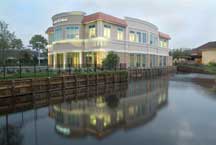

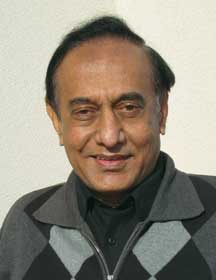
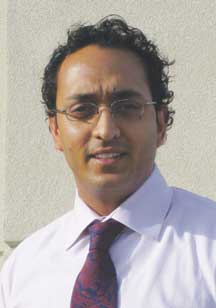
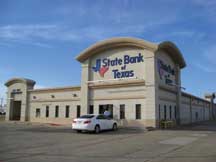
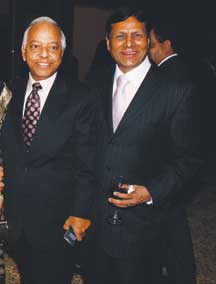
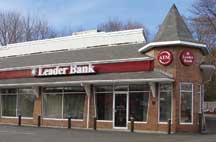

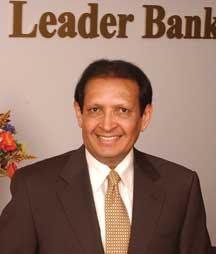
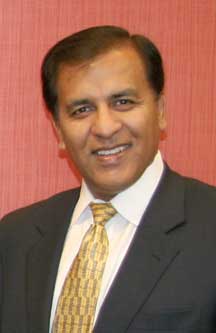
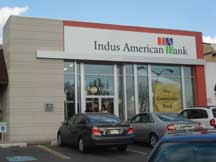
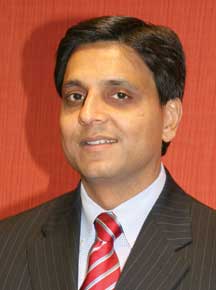

You must be logged in to post a comment Login